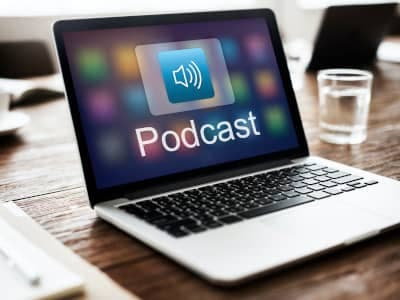U.S. Traceback Group questions and answers podcast
In this video podcast, Jim Dalton asks questions he often hears from voice service providers about the USTelecom Industry Traceback Group, which is now the Registered Traceback Consortium in the U.S. Watch these experts share their answers.
Panelists
 CEO TransNexus |  VP Policy and Advocacy USTelecom |  CEO ZipDX |
- Video transcript
- Jim Dalton
- OK, I’m Jim Dalton with TransNexus, and I get a lot of questions about the Traceback Group that I can’t answer, so I got a couple of experts today, really leaders in the industry that can answer questions about the Traceback Group and anything you want to know. First of all, David Frankel, he’s a serial entrepreneur and innovative telecom services. He’s with us. And also Josh Bercu, trained economist from Harvard, went to Georgetown law school, obviously a heavy hitter in terms of telecom policies with us, he’s VP of the USTelecom Association. So I just want to introduce you guys and just open up the conversation. If you could tell us what is what is the Traceback Group?
- Josh Bercu
- Sure, happy to and thanks, thanks very much for having us. I guess one thing I’ll say quickly is about USTelecom and then the how that leaving the Traceback Group. And then I’ll kick it to David, who’s got a little more history about what is traceback and how the Traceback Group got started. But USTelecom is a 501C 6 nonprofit. It’s a typical trade association that represents the interest of traditionally the facilities based wireline providers, although the membership has grown as the as the industry has grown as well. Several years ago, USTelecom was part of standing up the Industry Traceback Group, which is is part of USTelecom, the USTelecom family, but it’s also much broader. It’s not just those facilities based providers. It is a lot of other players in the ecosystem. And maybe, David, I’ll kick it to you about, you know, what is the traceback, how that got started and how it’s evolved a little bit.
- David Frankel
- Sure. Well, quite a few years ago as the robocall problem just kind of mushroomed out of control, we were all, to some degree, wringing our hands because these calls seem to come from everywhere and nowhere. And we didn’t have any way of knowing what the source was. And that’s the nature of the telephone network and the way the protocols have evolved. By the time it gets to the recipient, we don’t have a definitive answer, especially with spoofing, as to where it came from. So the notion of tracing a call back hop by hop to its source was born and is the way that we can definitively learn where a particular call came from. And the Traceback Group was an informal formalization originally of that process. So providers in the ecosystem got together and said, we’re just going to start at the end and go backwards asking each provider, hop by hop, “Where did you get this call?” Until we determine its source. And it was recognized by the group again early on that the best way to stop these calls would be to stop them at the source before they flooded out into the network. And that’s why it was important.
- Jim Dalton
- OK, great. Hey, well, thank you for explaining that well, let me ask you one question. So the FCC talks a lot about how service providers need to work with the Traceback Group. You go to the Traceback Group web page, you see their members. What does that mean for those companies that are members? How much does it cost as a company? Should a company want to become a member? What does that mean?
- Josh Bercu
- So the the the membership is a little bit of how the history of how the Traceback Group started, as David said, there really was early on before the Industry Traceback Group, before Traceback Consortium was codified, and long before the Industry Traceback Group was designated by the Federal Communications Commission as the official Traceback Consortium. Well, before that, the Industry Traceback Group was doing trace backs. And so part of that was getting a group of like-minded providers together to actually cooperate and agree that this is a reasonable way to deal with this issue. And so that’s a little bit of the history of membership. You’re right that the FCC is now requiring, in its latest order, cooperation with the Traceback Group, with the Traceback Consortium, which is the Industry Traceback Group. That does not mean membership. That means when you get a traceback notice, you complete the traceback note, you provide the information that’s requested as part of the traceback to help identify the source of the illegal robocall. And in fact, we have hundreds of providers that cooperate with us every day that are not members of the Traceback Group. So today, when when we think about membership, it is that we still have members. There are members who are part of contributing and supporting the Traceback Group in different ways, supporting our operations. But there are many more providers that are helpful participants in the ecosystem and that cooperate with our tracebacks that are not part of the Traceback Group in formal membership.
- David Frankel
- And if I can just add one more morsel from history, again, back when we started several years ago and this concept was being discussed before it was implemented, providers were asking, “Well, can we even share this information? Can we can we disclose where we got the call from?” And so there was a process which I can kind of laugh at today, where we had to go back and look at the regulations on CPNI and so on, and people had to get comfortable doing that. And so the members originally were the ones that stood up and said, hey, we thought about this, and we want to lead the way and, you know, show that this can work. And so it was important at that point time to have those members there and some financial support was needed and so on. So that’s what it was about originally. Now that it’s as, as Josh said, instantiated in law and regulation and so on and had much broader understanding of what it is amongst the industry, that becomes far less important. And it’s not mandated or discussed in the regulations.
- Jim Dalton
- OK, that’s a great clarification. So no company is obligated to join the Traceback Group. They don’t need to take any action. There’s nothing they need to fill out, register or apply for. So that’s good to know. That’s one concern. But I guess what I’m hearing is every service provider has to respond to the Traceback Group. And what does that look like? You know, you get a lot of bogus emails coming in and how do you know it’s not another ruse and it’s the real deal? How do you know it’s an email from the Traceback Group?
- David Frankel
- You know, it’s funny you mention that because we’ve had people tell us, oh, I ignored that email. I thought it was spam. So I think it’s a very valid question. The emails originate from a USTelecom.org email address, and the email will have in it a link. And you’ll see when you look at that link that the URL has a again, a USTelecom.org traceback at USTelecom.org, URL domain. So so look for that as validation and address again. So people know because because hopefully a lot of the people you are working with are not getting traceback notices and they will never get a traceback notice. Because really our goal my goal is to go out of business on this traceback stuff. I mean, I wish we could get robocalls down to zero and then we wouldn’t need we wouldn’t have anything to trace back. But if you get a traceback notice, that generally will be initiated by a response from the downstream provider from you that received the call from you. So they need to have current contact information so that if you are not already registered in our database, they can provide that information, and in particular an email contact address, so that our traceback system can dispatch that automatic notice to you so that you can then participate in the process and give your complete and timely response as mandated by the regulations.
- Josh Bercu
- And David makes a really good point about receiving the traceback request. One question I sometimes do get from folks is, well, how do I put my email in? How do I know that I’m going to get a request? What about where does it come? If you aren’t hearing from the Industry Traceback Group as a provider, that’s a great thing, that you should be proud that you’re not your network is not transmitting a number of robocalls. That’s why you aren’t hearing from us, because you aren’t showing up in our traceback. So they’re not hearing from us is a good thing. Not having being in the database is also a good thing.
- Jim Dalton
- Great. OK, well, that’s a big clarification, so that’s good. And one last one last question. So the FCC wrote a report to Congress and it had a really interesting spreadsheet in there. It showed all the service providers who are nonresponsive to the US or to the Traceback Group. And that looked like a bad list to be on. And what does that mean to be on that list? Can you get off of that list? What what happens if you don’t respond to the Traceback Group?
- Josh Bercu
- So when Congress passed the TRACED Act in late 2019 and it was eventually signed into law at the beginning of 2020, it did require that the FCC get that information from the Registered Traceback Consortium, which is the Industry Traceback Group, and then published that information in its report to Congress. You’re right, Jim. It’s not good to be on that list. At that point in time, it was not a legal requirement necessarily to cooperate with traceback. Soon, that will be an effective legal requirement that providers will need to cooperate with traceback, so being on that list is even worse that come next year than it was what was this year. But the thing I will say too is this is an area that a lot of regulators from federal and state, the FCC, FTC, DOJ, state AGs are very, very focused on. And I have to imagine they took a good look at that list and tried to think about if some of those providers were ones they should look at.
- Jim Dalton
- OK, well, good, well, I will I’m sure everybody wants to stay off that list, and I can’t imagine one of our customers being on there and anyway, but that’s all good to know. So thank you for all of that. That really clears up a lot of questions. Appreciate you guys taking the time to explain that to us and the great work you guys are doing to stop robocalls. So I think everybody really appreciates that.
- Josh Bercu
- Thank you.
- David Frankel
- OK, thank you, Jim. Great talking with you.

For more information, see our blog post Robocall traceback in the U.S.
TransNexus robocall mitigation solutions
We offer robocall mitigation solutions in our ClearIP and NexOSS software products. Contact us today to learn how we can help you prevent nuisance and scam robocalls from originating in or entering your network.
TransNexus has a comprehensive suite of robocall mitigation solutions to prevent the origination of unlawful robocalls.
Learn more about robocall mitigation